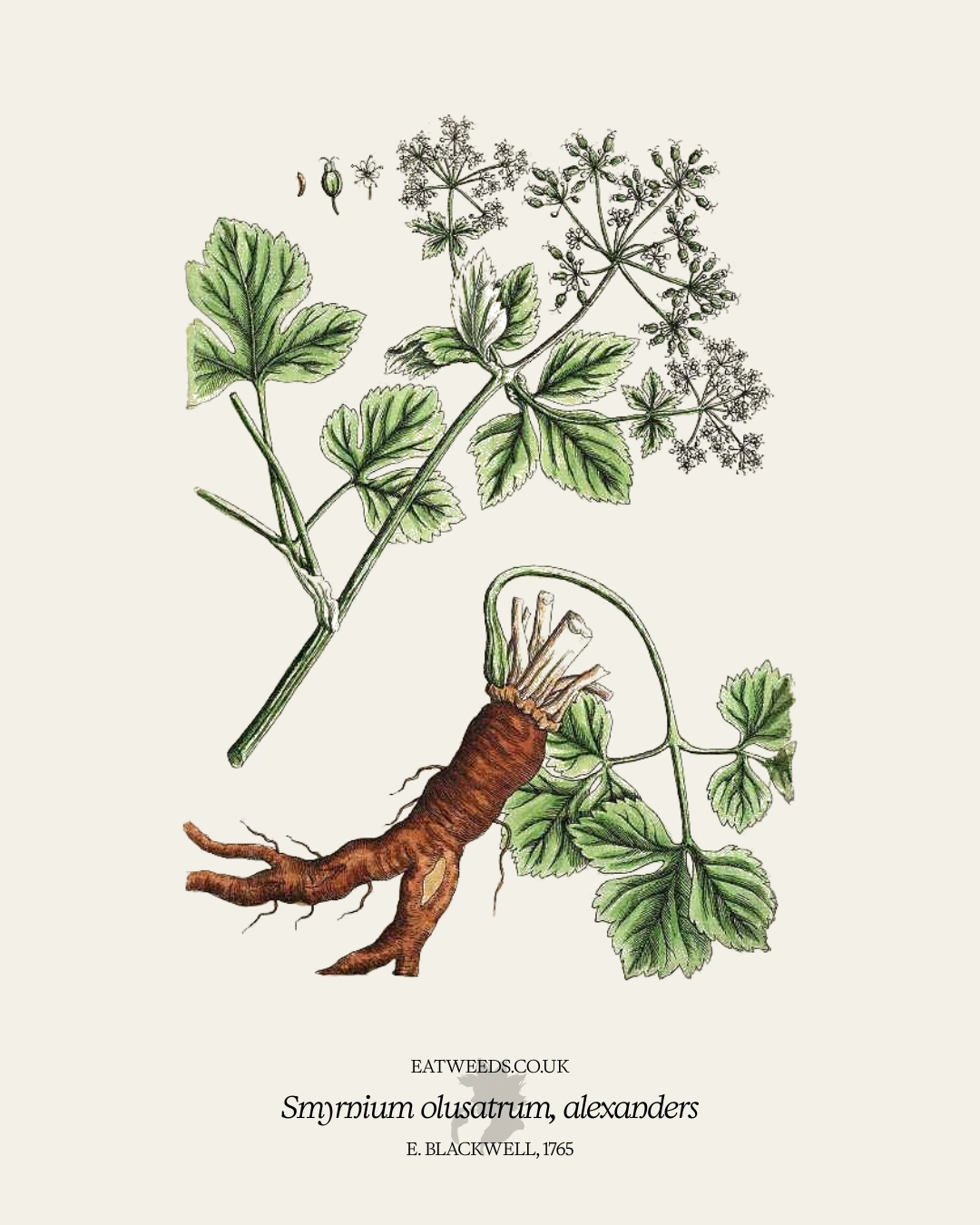Introduction
Alexanders has a fascinating past, used as food and medicine since Roman times.
Once called “parsley of Alexandria,” people grew this herb in gardens for years. But then celery became more popular. Even so, alexanders still grows near the sea today.
What makes alexanders special is its ability to create aromatic oils. These oils have a strong, sweet smell that attracts many pollinating insects.
This happens because it’s part of the Apiaceae plant family. This family is famous for making fragrant oils.
Pliny, a Roman naturalist from the first century AD, called alexanders “Smyrnium” because it smelled like myrrh.
Scientific name
Smyrnium olusatrum
Family
Apiaceae
Botanical description
This tall plant can grow up to 1.5 meters in height and produces greenish-yellow flowers arranged in umbrella-shaped clusters. The flowers emit a strong, myrrh-like scent. The leaves are bright green and have toothed edges, arranged in groups of three at the end of the leaf stalk. The fruit is round and has ridges, and when fully ripened, it turns blackish in colour.
Photo identification
Status
Biennial. Mediterranean native.
Habitat and distribution
You can find this Mediterranean plant in many places. It grows near the coast, on sea cliffs, and along roadsides. It also does well in old ruins, hedges, banks, and quarries. The plant comes from Asia Minor, Syria, and the Canary Islands. People have brought it to the British Isles, where it now grows naturally.
Entomology
Parts used for food
Leaves, stalks, fruit and root.
Harvest time
Spring to summer.
Food uses
Alexanders, once called “black potherb,” has black, spicy seeds. It often grows in old monastery ruins where monks grew it as a garden herb.
Cook the leaves and stalks for soups, broths, and stews. Use the flowers as spice and decoration in salads. Eat the buds pickled or fried. Add the root to casseroles and stews like parsnip.
This plant is a valuable source of protein, carbohydrates, and fatty acids, which are all found in its fruits.
Furthermore, the plant is rich in flavonoids and other bioactive compounds that offer a range of health benefits.
Recipes
- Alexanders and nipplewort pasta recipe
- Alexanders chutney recipe
- Alexanders in cheese sauce recipe
- Alexanders pasties recipe
- Brined alexanders recipe
- Buttered autumn stems of alexanders recipe
- Curried alexanders leaf recipe
- Pickled buds of alexanders recipe
- Spicy alexanders in hot tomato sauce recipe
- Steamed alexanders recipe
- Stuffed mackerel with alexanders seeds recipe
Herbal medicine uses
Alexanders was a traditional plant for cleansing the blood and a digestive herb for strengthening the stomach.
Seafarers used it to treat scurvy and herbalists used it to relieve stomach and urinary problems.
Alexanders was also a remedy for headaches, toothaches, swellings of the body, cuts and bruises, asthma and consumption, or tuberculosis.
Safety note
There is not much data on this plant’s toxicity. Talk to a health advisor before using it as medicine.
Links
- Edible and medicinal wild plants of Britain and Ireland
- Forage in spring
- Forage in summer
- Forage in autumn
References
Guarrera, P. M. & Savo, V. (2016) Wild food plants used in traditional vegetable mixtures in Italy. Journal of Ethnopharmacology. [Online] 185202–234.
Bertoli, A. et al. (2004) Volatile constituents of different parts (roots, stems and leaves) of Smyrnium olusatrum L. Flavour and Fragrance Journal. [Online] 19 (6), 522–525.
 Robin Harford
Robin Harford 